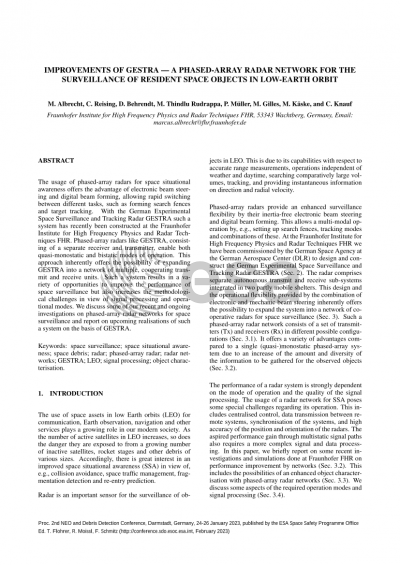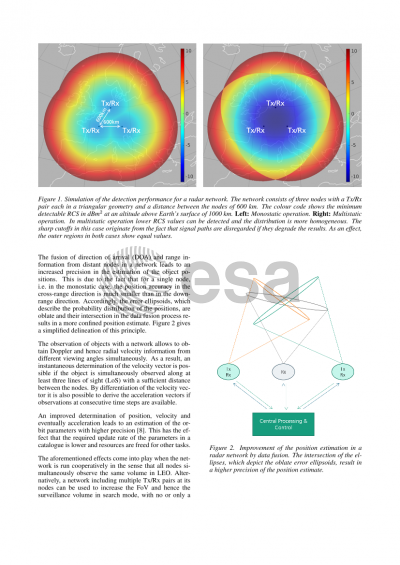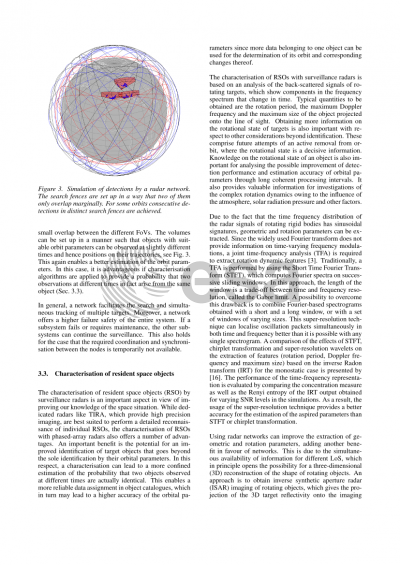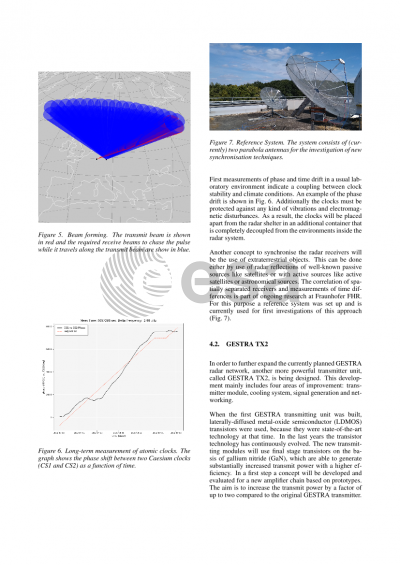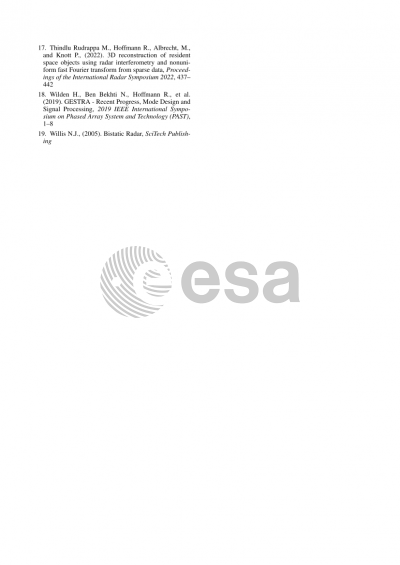Document details

Abstract
The important role of radar as a sensor for space situational awareness (SSA) in low-Earth orbits (LEO) is widely accepted. Especially the use of networks of phased-array radars offers the advantage of inertia-free, electronic beam steering and thus the option of using bi- and multistatic signal paths for different aspect angles as well as improved detection and estimation performance.
The Fraunhofer Institute for High Frequency Physics and Radar Techniques FHR was commissioned in 2014 to construct the partly mobile phased-array system GESTRA. The very high operational flexibility of phased-array systems offers the inherent possibility of extending such a system to a network of radars for space surveillance. In principle, such a network, consisting of a cooperative set of transmitters and receivers, provides a variety of advantages compared to a single (quasi-)monostatic phased-array radar. The benefits of networks of medium extent, i.e. with a few hundred kilometres distance between the stations, originate mainly from a gain in information diversity through the usage of bi- and multistatic signal paths and the simultaneous observation of objects from different aspect angles. The characterisation of objects through a determination of their rotational and geometrical parameters is enhanced, as it is not restricted to a single line of sight. Furthermore, techniques for a better estimation accuracy of the target position and orbit parameters as well as an instantaneous estimation of the three-dimensional velocity vector are current topics in the scientific community. Consequently, to increase the performance of the GESTRA system, there are commissions for initial steps to build up a distributed network of phased-array radars by adding a second receiver as well as an additional transmitter. Moreover, the purely scientific aspects of the network topics are simulated in two studies.
Nevertheless, the use of phased-array radar networks poses some challenges regarding its hardware and mode of operation. This includes centralized control, data transmission between remote systems, synchronisation of time, frequency and phase as well as high accuracy of the knowledge of position and orientation of the radars. The gain in information diversity also requires a more complex signal processing to fully exploit the advantages of a radar network.
In this contribution, we report on the latest results of a GESTRA network performance analysis. We give an overview of our investigations on signal processing methods for radar networks and show results of our simulations, which quantify the enhanced capabilities of such systems for space surveillance. We also present different aspects of ongoing projects at Fraunhofer FHR to realise radar networks. This includes a description of the hardware that needs to be enhanced or changed in the original GESTRA system and an overview of the enhanced software framework. Furthermore, the construction of a receiver with improved capacities in addition to GESTRA, the design of an additional transmitter with decentralized waveform generation and, due to the change in transistor technology, higher transmit power are part of this work as well as investigations on the networking between the individual systems.
Preview
